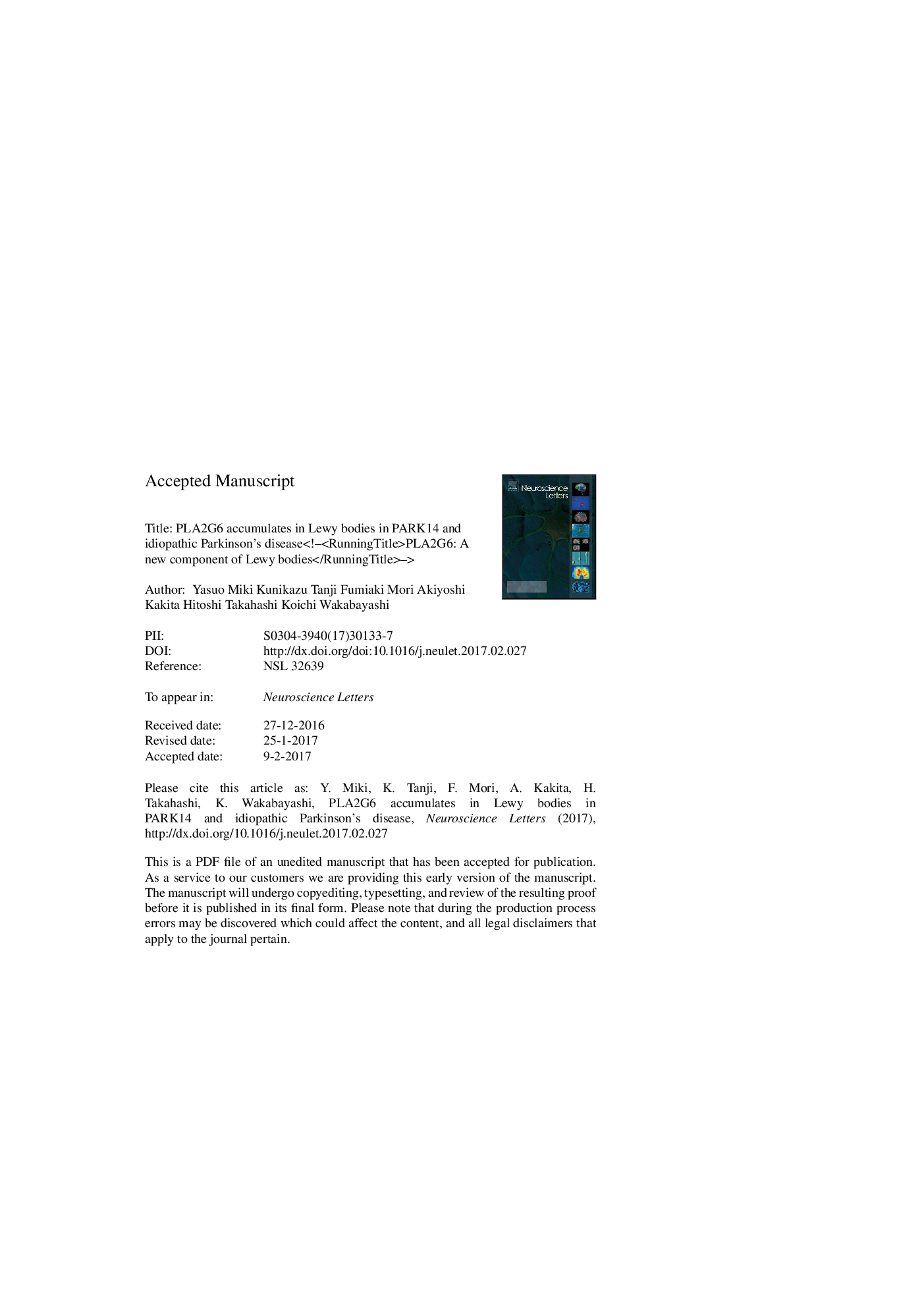| Article ID | Journal | Published Year | Pages | File Type |
|---|---|---|---|---|
| 5738766 | Neuroscience Letters | 2017 | 17 Pages |
Abstract
The histopathological hallmark of Parkinson's disease (PD) and dementia with Lewy bodies (DLB) is the occurrence of insoluble fibrillary aggregates known as Lewy bodies, in which phosphorylated α-synuclein (α-syn) is a major component. To date, familial PD-linked gene products, including α-syn, parkin, PINK-1, DJ-1 and LRRK2, are known to be involved in Lewy body formation. Phospholipase A2, group VI (PLA2G6) is the causative gene for PARK14-linked parkinsonism (PARK14), a familial form of juvenile-onset dystonia parkinsonism. Several lines of evidence have suggested that PLA2G6 might play a role in the pathogenesis of not only PARK14, but also idiopathic PD. However, no published studies have investigated the association of PLA2G6 with the formation of Lewy bodies. In the present study, we used immunohistochemistry and Western blotting to investigate the involvement of PLA2G6 in Lewy body disease (PD and DLB), multiple system atrophy and Alzheimer's disease, in comparison with normal controls. Although cortical Lewy bodies, which lack a definable central core, were unstained with anti-PLA2G6 antibodies, the cores of brainstem-type Lewy bodies from PARK14 and idiopathic PD patients were moderately or intensely immunopositive for PLA2G6. Our results further reinforce the association of PLA2G6 with the pathogenesis of idiopathic PD, in addition to PARK14.
Related Topics
Life Sciences
Neuroscience
Neuroscience (General)
Authors
Yasuo Miki, Kunikazu Tanji, Fumiaki Mori, Akiyoshi Kakita, Hitoshi Takahashi, Koichi Wakabayashi,
